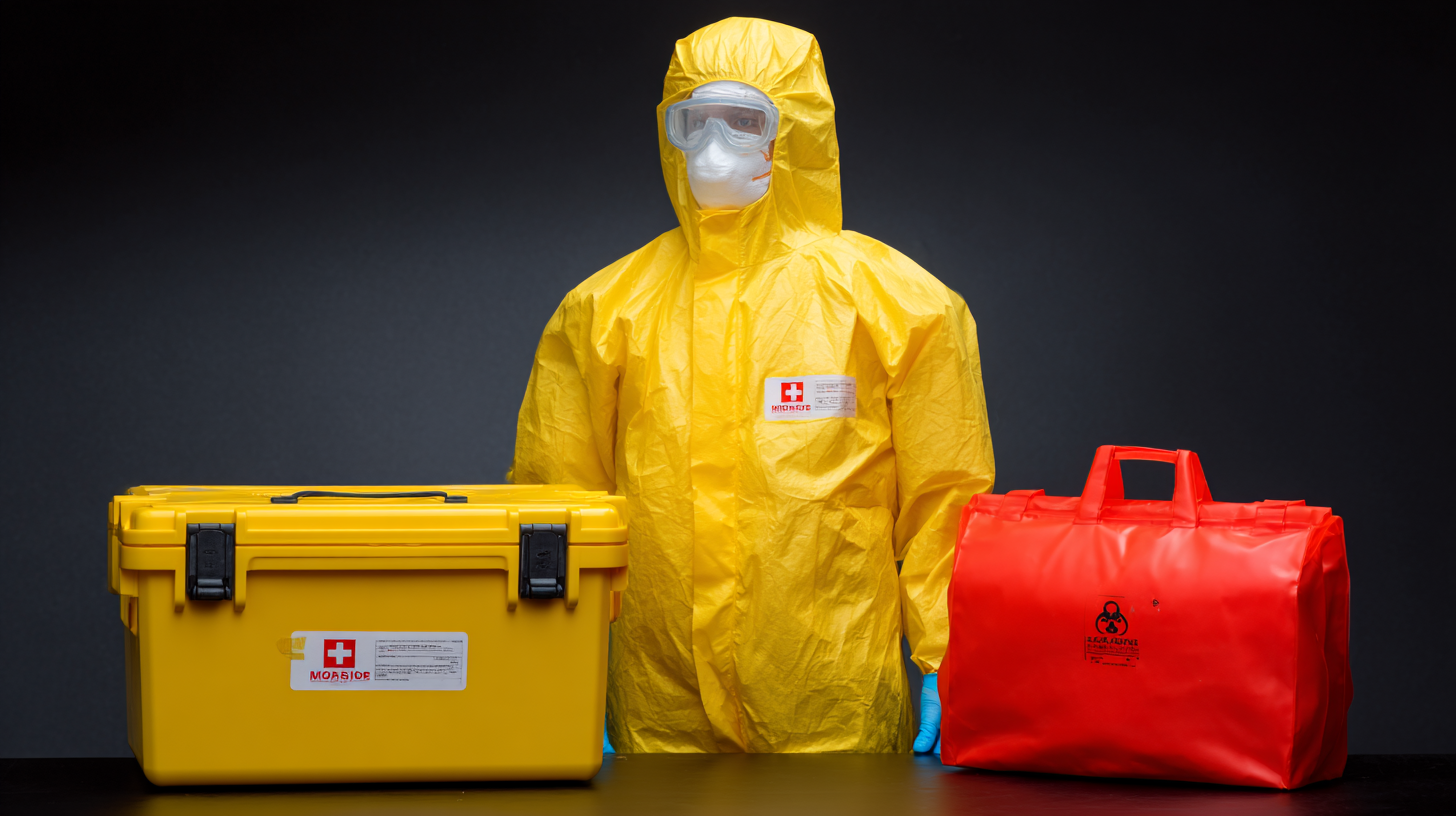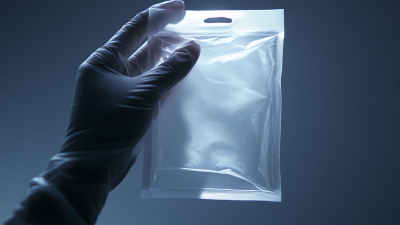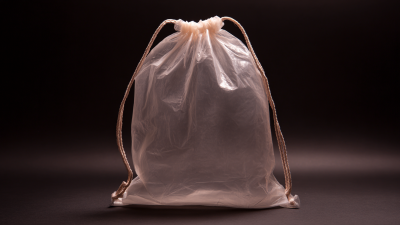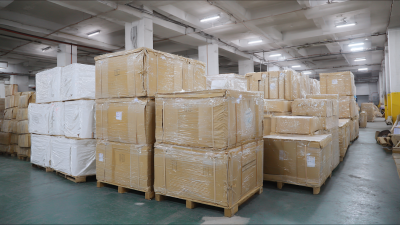 +86 178 5514 5298
+86 178 5514 5298
Leave Your Message
-
 CONTACT NUMBER
CONTACT NUMBER -
 CONTACT NUMBER
CONTACT NUMBER -
 CONTACT NUMBER
CONTACT NUMBER



In the ever-evolving landscape of medical transport, ensuring the safe and compliant movement of hazardous specimens is paramount. The use of biohazard specimen transport bags is a critical component in safeguarding both healthcare professionals and the broader community from potential biological risks. According to a recent report by the World Health Organization, approximately 1.7 million healthcare-associated infections occur each year due to improper specimen handling. This alarming statistic underscores the necessity for the correct selection and utilization of biohazard specimen transport bags, which adhere to stringent safety regulations and provide reliable containment.

Dr. Jane Smith, a leading expert in biohazard safety, emphasizes the significance of choosing the right bags for specimen transport:
"The integrity of a specimen during transportation can be compromised if the appropriate biohazard specimen transport bags are not utilized. It's imperative for healthcare facilities to invest in high-quality options to minimize risks."With advancements in materials and design, selecting the appropriate transport bags can dramatically enhance safety protocols and ensure compliance with regulatory standards. In this guide, we present the "Top 10" considerations for choosing the right biohazard specimen transport bags for safe medical transportation in 2025, helping organizations make informed decisions that align with industry best practices.
 When selecting biohazard specimen transport bags for medical use, several critical factors should be considered to ensure safety and compliance. First and foremost, it is essential to verify that the bags meet regulatory standards, such as those set by the Centers for Disease Control and Prevention (CDC) and the World Health Organization (WHO). These standards dictate the materials and design necessary for effectively containing biological specimens and preventing leaks or contamination.
When selecting biohazard specimen transport bags for medical use, several critical factors should be considered to ensure safety and compliance. First and foremost, it is essential to verify that the bags meet regulatory standards, such as those set by the Centers for Disease Control and Prevention (CDC) and the World Health Organization (WHO). These standards dictate the materials and design necessary for effectively containing biological specimens and preventing leaks or contamination.
Additionally, the size and functionality of the transport bags play a significant role in their suitability for medical transport. Bags should be appropriately sized for the specimens they are intended to hold, while also allowing for adequate cushioning and insulation to protect samples from temperature fluctuations. Look for features such as double-seal closures and puncture-resistant materials, which enhance their protective capabilities. Lastly, consider the ease of labeling and identification, as proper documentation is essential for tracking specimens throughout the transport process.
When selecting biohazard specimen transport bags for safe medical transportation in 2025, understanding regulatory standards is crucial. The Transportation of Dangerous Goods (TDG) Program in Canada emphasizes the need for rigorous safety standards and regulations applicable to biohazard transport. These standards ensure that all materials, especially hazardous ones, are handled and transported in a manner that minimizes any risk to public safety.
Compliance with these regulations not only leads to safer transportation practices but also protects healthcare workers and the environment.
In addition to regulatory compliance, awareness of best practices for transporting biohazardous materials is paramount. As highlighted in various industry reports, the biohazard bags market is experiencing significant growth, driven by increasing awareness of safety practices in healthcare logistics. Companies need to invest in high-quality transport bags that meet or exceed established standards. By prioritizing legal guidelines and safety tips, healthcare facilities can effectively manage the risks associated with the transportation of biohazardous materials, ensuring both compliance and safety.
When selecting biohazard specimen transport bags for safe medical transportation, it is crucial to consider key features that ensure the integrity and safety of the specimens. One of the primary characteristics to look for is the bag's material, which should be durable and leak-resistant. This helps to prevent any contamination during transport, safeguarding both healthcare workers and the surrounding environment. In addition, ensuring that the bags carry appropriate labeling, including biohazard symbols, enhances visibility and alerts handlers to the potentially hazardous contents.
Another important feature is the bag's closure mechanism. Reclosable ziplock pouches are highly effective as they provide an airtight seal, further reducing the risk of leaks. Additionally, a transparent design allows for easy inspection of the contents without compromising the specimen’s security. Some advanced models may include outside pockets for necessary paperwork, making it convenient to keep essential documentation attached to the specimen. These functionalities collectively contribute to the safe and efficient transportation of medical specimens, aligning with contemporary guidelines for specimen management.
| Feature | Description | Importance |
|---|---|---|
| Material | High-quality plastic or leak-proof material to ensure durability and prevent leaks. | Essential for maintaining specimen integrity during transport. |
| Size Options | Various sizes to accommodate different specimen types. | Allows for flexibility in transportation of various specimen volumes. |
| Seal Type | Secure seals (e.g., ziplock, adhesive) to prevent contamination. | Critical for safety and compliance with biohazard regulations. |
| Labeling | Clear biohazard symbols and specimen labeling areas. | Important for quick identification and safety awareness. |
| Temperature Control | Insulation features to maintain temperature-sensitive specimens. | Crucial for preserving the viability of biological samples. |
When selecting biohazard specimen transport bags, the materials used and their durability play a crucial role in ensuring safe medical transportation. Common materials include polyethylene and polypropylene, each offering different levels of puncture resistance and flexibility. Polyethylene bags are generally cost-effective and provide adequate protection for non-hazardous specimens. However, for more sensitive or infectious materials, polypropylene bags prove to be more robust, offering superior strength and resistance to tears, which is essential for maintaining specimen integrity during transit.

Additionally, the durability of biohazard transport bags can be assessed based on their sealing capabilities and thickness. Heat-sealed bags tend to offer better protection against leaks than those that use adhesive seals. A thicker bag not only provides increased puncture resistance but also enhances overall durability, reducing the likelihood of contamination during handling. Ultimately, selecting the right material and ensuring the bags are durable enough to withstand the rigors of transport are vital for safe biomedical practices and compliance with health regulations.
When handling and transporting biohazard specimens, adhering to best practices is crucial to ensure safety and compliance with regulatory standards. According to a report from the World Health Organization, improper transportation of medical specimens can lead to significant risks, including exposure to infectious agents for healthcare workers and the public. Therefore, using the right biohazard specimen transport bags is essential to mitigate these risks.
Tips: Always select transport bags equipped with leak-proof seals and appropriately labeled for biohazardous materials. The U.S. Centers for Disease Control and Prevention recommend double-bagging specimens, particularly those containing infectious materials, to provide an additional layer of security during transport.
In addition to selecting appropriate bags, it's vital to maintain the required temperature for specimens to ensure their integrity. Transporting specimens that require cold storage in insulated containers can help preserve their stability. The American Society for Microbiology emphasizes that maintaining a temperature range of 2-8°C during transit can significantly reduce degradation and improve testing accuracy.
Tips: Regularly monitor the temperature of your transport equipment, and utilize digital temperature logging devices to ensure compliance with storage guidelines throughout the transportation process.






